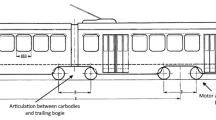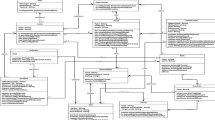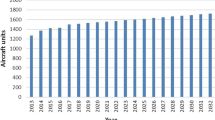Abstract
Ro-Ro vessels for cargo and passengers (RoPax) are a relatively new concept that has proven to be popular in the Mediterranean region and is becoming more widespread in Northern Europe. Due to its design characteristics and amount of passengers, although less than a regular passenger liner, accidents with RoPax vessels have far reaching consequences both for economical and for human life. The objective of this paper is to identify hazards related to casualties of RoPax vessels. The terminal casualty events chosen are related to accident and incident statistics for this type of vessel. This paper focuses on the identification of the basic events that can lead to an accident and the performance requirements. The hazard identification is carried out as the first step of a Formal Safety Assessment (FSA) and the modelling of the relation between the relevant events is made using Fault Tree Analysis (FTA). The conclusions of this study are recommendations to the later steps of FSA rather than for decision making (Step 5 of FSA). These recommendations will be focused on the possible design shortcomings identified during the analysis by fault trees throughout cut sets. Also the role that human factors have is analysed through a sensitivity analysis where it is shown that their influence is higher for groundings and collisions where an increase of the initial probability leads to the change of almost 90% of the accident occurrence.
Similar content being viewed by others
References
O. Levander. Advance machinery with CRP propulsion for Fast RoPax vessels, The Motorship Marine Propulsion Conference, Copenhagen, Nexus Media Communications Ltd, UK, 2002.
K Levander. Improving the RoPax Concept — With High Tech Solutions, In Proceedings of Euro Conference on Passenger Ship Design, Operation and Safety, Crete, 2001.
R. Fullwood, R. Hall. Probabilistic Risk Assessment in the Nuclear Power Industry, Fundamentals and Applications. Pergamon Press, Qxford, pp. 107–286, 1988.
D. S Aldwinckle, K. J. Lewis. Risk Analysis of Future Floating Systems, In Proceedings of International Symposium on Development of Floating Production System, RINA, UK, 1984.
P. Pedersen, S. Zhang. Collision Analysis for MS DEXTRA, In Proceedings of SAFER EURORO Spring meeting, Paper no. 2, Nantes, 28 April, 1999.
Ixi. SimTree version 2.104, Aralia Workshop, 1999–2001, 1999.
J. Williams. HEART — A proposed Method for Assessing and Reducing Human Error, In Proceedings of the 9th Advances in Reliability Technology Symposium, University of Bradford, UK, 1986.
S. R. Silva, T. A. Santos and C. Guedes Soares. Parametrically excited roll in regular and irregular head seas. International Shipbuilding Progress, vol. 52, no. 1, pp. 29–56, 2005.
L. Kobylinski. System of Safety against Capsizing, In Proceedings of Internationales Rostocker Schiffstechnisches Symposium, Rostock, vol. 3, pp. 220–239, 1989.
I. Dand. Factors Affecting the Capsize of Damaged RoRo Vessels in Waves, In Proceedings of the RINA Symposium on RoRo Ship’s Survivability — Phase 2, paper no. 3, London, 25 November, 1994.
J. R. Spouge. The Safety of RoRo Passenger Ferries, Transactions of RINA, vol. 130, pp. 1–12, 1988.
A. Vredeveldt, J. Journée, H. Vermeer. The Effect of Crashworthiness and Solid Buoyancy on Survivability of Damaged and Flooded Ro-Ro Ships, In Proceedings of Seventh International Conference on Stability of Ships and Ocean Structures (STAB2000), Martin Renilson Ed., Launcheston, Tasmania, pp: 396–407, 2000.
T. Santos, I. Winkle, C. Guedes Soares. Time domain modelling of the transient asymmetric flooding of Ro-Ro ships, Ocean Engineering, vol. 29, no. 6, pp: 667–688, 2002.
Author information
Authors and Affiliations
Corresponding author
Additional information
Pedro Antão graduated from Engineering Faculty of the Technical University of Lisbon (Instituto Superior Técnico) in 1998. He received his M.Sc degree from Heriot-Watt University, Scotland in 2000. Presently he is a Research Assistant at the Unit of Marine Technology and Engineering at the Technical University of Lisbon. His research interests include maritime accidents and the influence of human factors in their occurrence.
Carlos Guedes Soares received his M.Sc degree from the Massachusetts Institute of Technology in 1976, a Ph.D. degree from the University of Trondheim in 1984 and a Doctor of Science from the Technical University of Lisbon in 1991. Presently he is a Professor at the Engineering Faculty of the Technical University of Lisbon (Instituto Superior Técnico). His research interests include probabilistic modelling for risk and reliability analysis.
Rights and permissions
About this article
Cite this article
Antão, P., Guedes Soares, C. Fault-tree models of accident scenarios of RoPax vessels. Int J Automat Comput 3, 107–116 (2006). https://doi.org/10.1007/s11633-006-0107-8
Received:
Revised:
Issue Date:
DOI: https://doi.org/10.1007/s11633-006-0107-8




